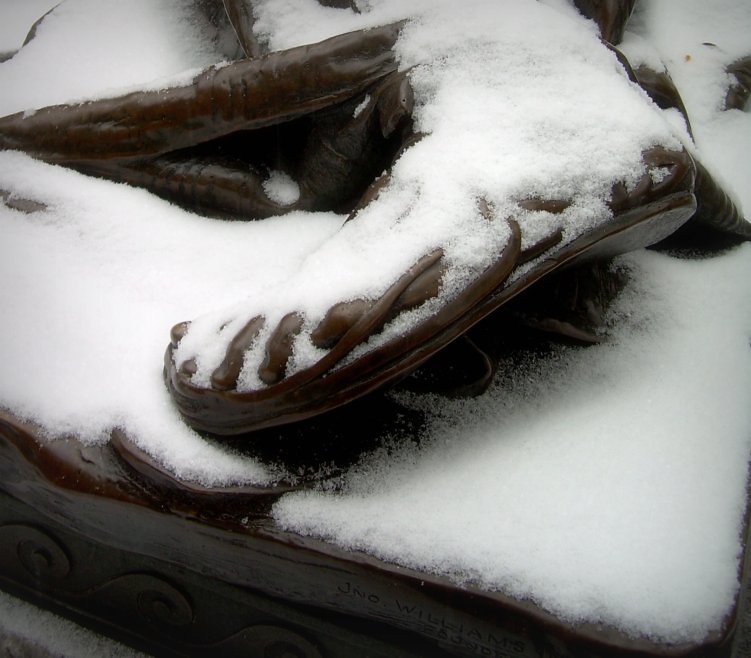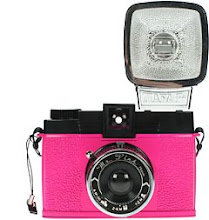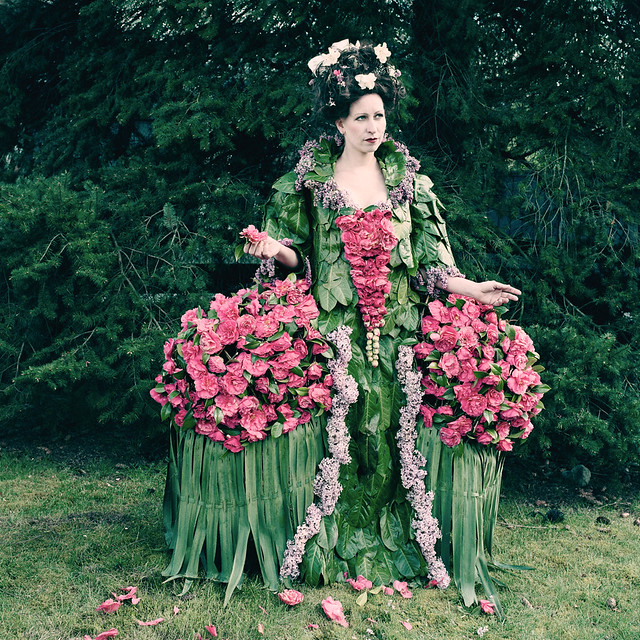
For the past six years, Nicole Dextras has taken the native plants of the Pacific Northwest and turned them into elaborate dresses she calls "weedrobes."
Dextras’s art is made out of things found in nature: ice, grass, flowers and leaves. As such, they melt, crack, rot, disintegrate and return to their original composite elements. The dresses are beautiful, but Dextras has more than a pretty picture in mind. Her plant-based apparel is designed to confront important environmental concerns.
"I've had an ongoing interest in environmental art, and working in the theater as a clothes designer opened me up to the idea that the way people dress affects their psychology," Dextras says. "I want these dresses to open a dialogue to people about where their clothes come from."
On frames woven from flexible boughs, Dextras layers sturdy plant materials, such as yucca and eucalyptus leaves, stitched to the frames with hawthorn ‘pins’. Professional actors bring the costumes to life, improvising on themes of nature, such as Jordi Sancho’s memorable Eco-man or Nita Bowerman’s “Ivy” from the 2009 Invasive Species Show. The costumes are brought to Dextras’s back yard where the process of disintegration begins.

Dextras's studio is located on Granville Island in Vancouver BC. The artist divides her time between her art practice, teaching, casting editions for local artists and volunteering for art organizations such as the BC Book Arts Guild and the Artists and Artisans of Granville Island.
Dextras has meticulously photographed all her pieces and the performances, on view at her flickr stream and on her website.
:nicole dextras, weedrobes summer series; artist statement; shop
7.24.2011
nicole dextras: ephemeral fashion
2.17.2011
saturday fare: the metropolitan
Taking multiple detail shots of works of art satisfies me on several levels — not the least of which is that I can make my own postcards for later study and recall.* I've found (have you?) that museums no longer deliver on the extensive-variety-of-exhibition-postcards front. This makes me cranky, since I'm a compulsive postcard collector from way back. My solution has been to stop the moaning, just deal with it already and do it myself.
Case in point: Several years ago (four? ten? whatever), I took these photos of the Tomb Effigy of Elizabeth Boott Duveneck at the Met. I've seen the sculpture many, many times on Met visits — and I've photographed it before as well — but this time, I wanted to move in and capture a sense of the rich patina and the artistry of the folds and deep relief. And so? And then? Well?
Me likey. Me not grumpy anymore. And for you, my dearest darlings, repros of these and many other swoond images (card-size, wall-size and in-betweens) will soon be available to order online.
About the artwork: After the death of Elizabeth Boott Duveneck (1846-1888), her bereaved husband, the painter Frank Duveneck, modeled a funerary monument with the guidance of the Cincinnati sculptor Clement J. Barnhorn. Reminiscent of Gothic and Renaissance gisant (recumbent) tomb effigies, the figure reclines peacefully, arms folded over her chest. The palm branch stretching nearly the entire length of her body symbolizes Christian victory over death. The original bronze is on Elizabeth Duveneck's grave in the Cimitero Evangelico degli Allori, the Protestant cemetery on the outskirts of Florence.
* Many thanks to all of you who have inquired about prints, cards and large-scale reproductions(!) of my photos. I've responded to most of you individually, but I want to make sure you know that you'll soon be able to place orders online. As ever, thanks for your visits and support. Mwah! and again, Mmmwah!!
:tomb effigy of elizabeth boot duveneck, 1891; this cast, 1927; gilt bronze; the metropolitan museum of art, new york city
2.04.2011
frozen fruit

To quote the Cowardly Lion: Unusual weather we're having, ain't it?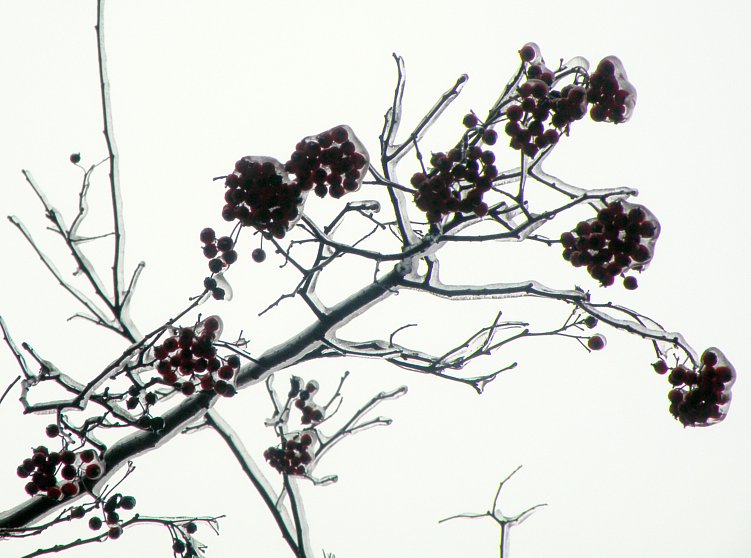
:images diana, groundhog day on ice
check out groupings of my upsized photos here at beautimuse
1.21.2011
here comes the sun
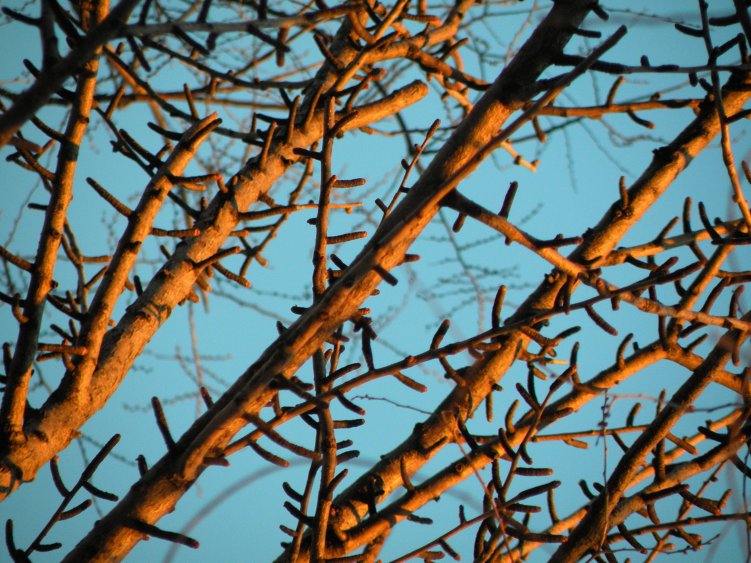
The depth of color and shadow produced by sidelong sunrise light (featured here) is endlessly fascinating to me.
(And, lest we forget, sunset light has its own special mojo. But it's sunrise's turn today. Thank you.)
:image diana murphy
1.17.2011
1.01.2011
1-Jan-65
The kings will lose your old address.
No star will flare up to impress.
The ear may yield, under duress,
to blizzards’ nagging roar.
The shadows falling off your back,
you’d snuff the candle, hit the sack,
for calendars more nights can pack
than there are candles for.
What is this? Sadness? Yes, perhaps.
A little tune that never stops.
One knows by heart its downs and ups.
May it be played on par
with things to come, with one’s eclipse,
as gratefulness of eyes and lips
for what occasionally keeps
them trained on something far.
And staring up where no cloud drifts
because your sock’s devoid of gifts
you’ll understand this thrift: it fits
your age; it’s not a slight.
It is too late for some breakthrough,
for miracles, for Santa’s crew.
And suddenly you’ll realize that you
yourself are a gift outright.
- Joseph Brodsky
(translated from the Russian by the author)
Brodsky wrote this poem while in internal exile in Norenskaia, in the Arkhangelsk region of northern Russia. In the Soviet Union,
New Year’s celebrations came to be seen as a substitute for Christmas. This translation was found among his papers.
:image diana murphy, new york city


